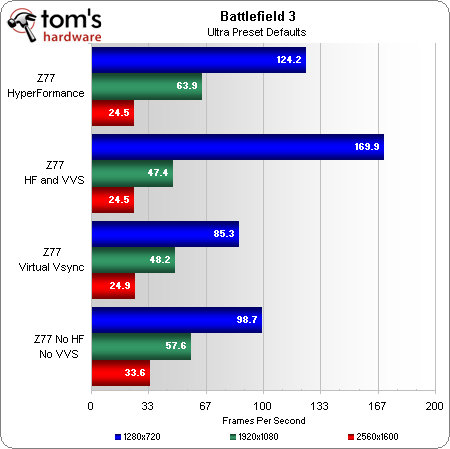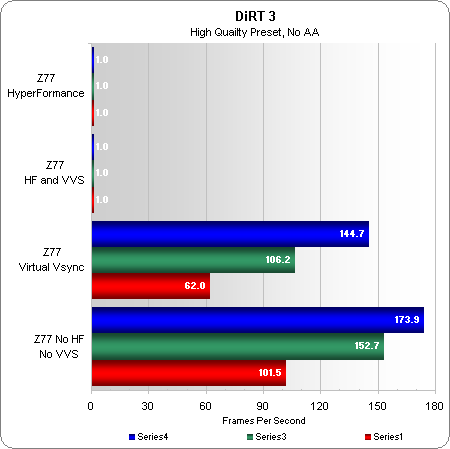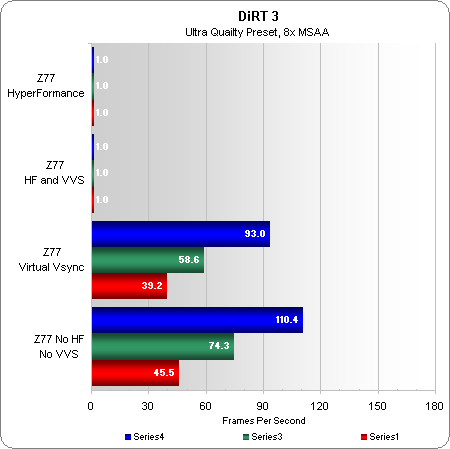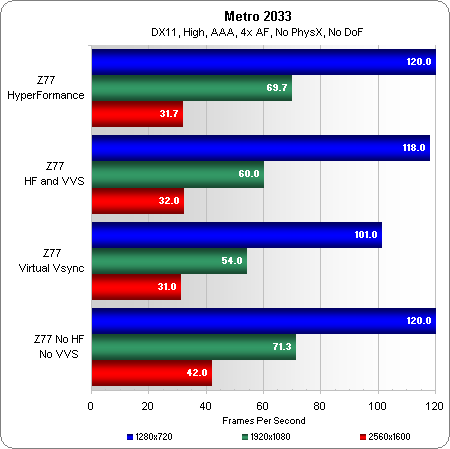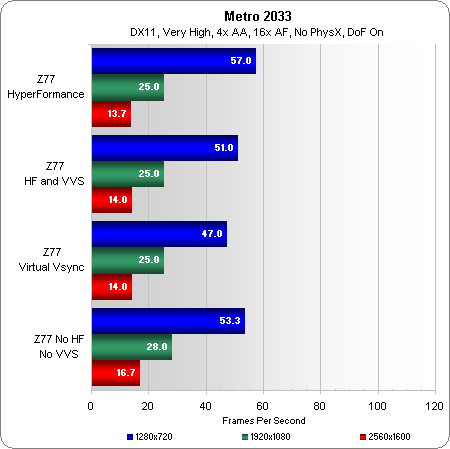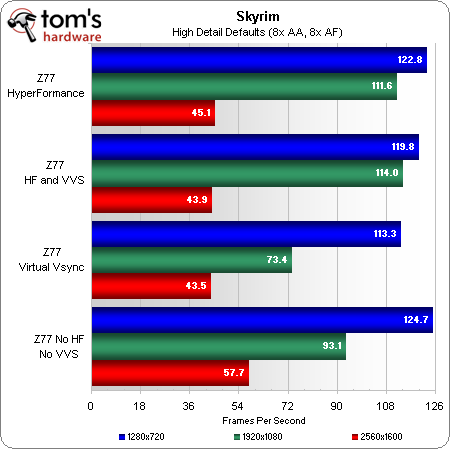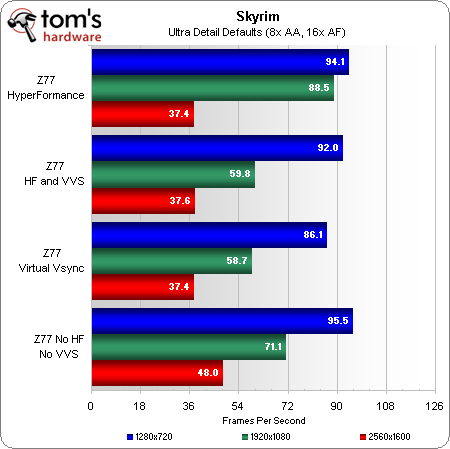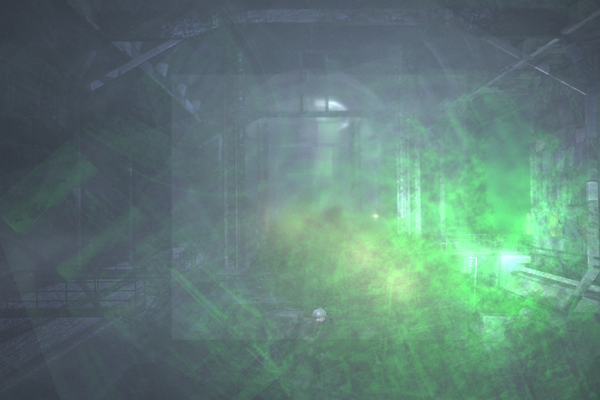Intel’s Z77 Express And Lucidlogix MVP: New Features For Gamers
Integrated USB 3.0, advanced management features, reduced power consumption, and a new software package from Lucidlogix separate the Z77 Express motherboards from the Z68 chipset that preceded it. Were these capabilities worth waiting for?
HyperFormance And Virtual Vsync In Games
We never let manufacturer recommendations influence our game selection. After all, you don't pick the games you play based on the platform's capabilities. It's the other way around. You expect your platform to work with the games you play.
The immensely popular Battlefield 3, for example, is on Lucidlogix’s list of non-validated games. We can say, however, that Virtu MVP version 2.1.110 worked fairly well with it. Unfortunately, newer builds of Virtu MVP prevented the game from running at all.
Virtu MVP imparts a Battlefield 3 performance penalty at 2560x1600, regardless of which technologies are enabled. Naturally, you wouldn't want to use Virtual Vsync at that setting, though, since the frame rate already falls below 60 FPS. HyperFormance provides a big boost in average FPS at other resolutions, though we couldn’t find a cause for the anomalous results at 1280x720.
HyperFormance did not work at all in DiRT 3. Enabling it caused an error report in Virtu MVP, and ignoring the error caused the application to crash and burn to the point that reinstallation was required. Yet, if all you want is the elimination of tearing, you can use Virtual Vsync with little performance loss.
HyperFormance holds little to no performance benefit for Metro 2033 and Skyrim, other than to offset the performance lost to Virtual Vsync. Both games have it disabled by default, and Metro 2033 shows strange artifacts when the technology is “forced”.
Get Tom's Hardware's best news and in-depth reviews, straight to your inbox.
Current page: HyperFormance And Virtual Vsync In Games
Prev Page HyperFormance, Virtual Vsync, And 3DMark Next Page Z77 Is Only Half Of The Story-
-Fran- Wasn't the MVP software to account for the "dips" in performance for discrete video cards?Reply
Could you guys provide a video showing the differences between a run with the MVP and without? With V-Sync on also.
Nice review, BTW. Thanks for it 8)
Cheers! -
confish21 Tom, should we expect much of an advantage when ivy bridge is used?Reply
IB and z77 VS. IB and z68? -
s3anister On page three you label the MSI Z68A-GD80 motherboard as Intel Z77 Express when it should obviously be Z68.Reply
Made me do a double take! -
s3anister confish21Tom, should we expect much of an advantage when ivy bridge is used?IB and z77 VS. IB and z68?Reply
Don't expect them to tell you, they're still under Intel's NDA. -
nebun is this a joke? we need to have at lease 2 pcie lanes at 16x speed for serious gaming...2 lanes at 8x will be bringing down your true capability of the graphic cards...thanks but not thanks...i will stick with my x58 chip for nowReply -
jaquith aicomYou bolded PCIE 2.0 for Panther Point but forgot to change it to PCIE 3.0No, the Z77 and all Panther Point chipest are indeed 8x lanes of PCIe 2.0, so Thomas's article is correct. Don't confuse GPU PCIe lanes with Chipset PCIe lanes. However, Thomas knows that I too 'wish' the LGA 1155 was PCIe 3.0 clean, it sure would help with other chipset 'sharing' issues (bottlenecks).Reply -
josejones Where's the performance increase with the z77 over the z68? The new features are a plus but, previews I've seen so far suggest that the z77's are slower than the z68.Reply
What's up with that? Do the z77's require the Ivy Bridge CPU to take full advantage? Sounds like possible driver and/or most likely BIOS issues as others have pointed out elsewhere on page 2 of the z77 Motherboard Discussion thread. -
tmk221 This Lucidlogix Virtu software looks very promising. Certainly it needs a lot of improvment but I think that they will do good job having intel as a partnerReply -
thehidecheck nebunis this a joke? we need to have at lease 2 pcie lanes at 16x speed for serious gaming...2 lanes at 8x will be bringing down your true capability of the graphic cards...thanks but not thanks...i will stick with my x58 chip for nowpoppycock, even high end cards can't even come close to saturateing a 8x slotReply
http://www.youtube.com/watch?v=NFMzRZqFh-w get learned yo

